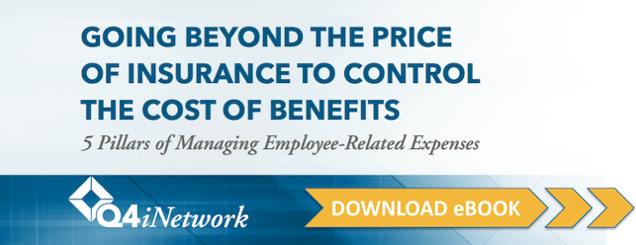We communicate every day in lots of ways. At work. At home. At Starbucks. Most of the time, we do it without a specific plan. And while planning out your communications may sound strange, it can work wonders for your results— especially when you’re talking business.
To make the most of your workplace communication efforts, you’ll want to consider the following factors:
- Priorities – Are you communicating the most important things?
- Data – Is your information accurate?
- Audience – Are you speaking to the right people?
- Rhythm – Does the timing make sense?
Start with priorities
Some conversations are best when they come about organically, but that’s rarely the case when you need to address a specific topic with your team. Setting your priorities before you have that conversation will help keep you from being unclear, getting sidetracked, or missing the point completely.
To get on the right track, ask yourself these key questions:
- What is it that you need to convey?
- Are you leading with the most critical information dancing around the topic?
- How will you express your thoughts in a way that makes sense and resonates?
Be sure not to cram too many priorities into any one conversation. People can only process and remember so much. Keep the priority list short, clear, and succinct and you will have an easier time getting the information across.
Check your data
If your conversation centers around trends, numbers, research, and/or evidence, make sure you get your facts right.
- Do your homework
- Check your sources
- Write things down
- Don’t try to wing it or keep a bunch of statistics straight in your head
Which of these approaches sounds more effective?
“According to your last review, you’ve missed 3 deadlines in a row.”
“I feel like you’ve been missing a few deadlines.”
Number 1, right? If you have the actual review in front of you, even better! Now you can work off of documented history rather than hazy memories.
If you’re talking trends, simply saying “Sales are up!” isn’t going to be nearly as impactful as saying, “Total sales are up 12%, but online sales are up 26%.” Now that’s some useful information! But if sales are actually up 36% and you didn’t get it right, you missed an even bigger opportunity.
If you’re using numbers to make your point, the key is to be specific and accurate.
Consider your audience
Before you get into a discussion, take a moment to think about who needs to hear your message and what their respective concerns will be. Depending on who you are talking to, these things can be vastly different. Here are a few examples.
- Prospects will be interested in what you can do for them
- Clients need to feel appreciated and valued
- Partners want to know the advantages of working with you
- Employees are interested in company culture and values, and where they fit in
Of course, all of these things can adjust and change depending on the topic of the day. The key is to think about who you’re communicating with and how the information will be received and processed— before jumping into that discussion.
Thinking about your audience will help you tailor your delivery to make it as effective as possible.
Get your rhythm down
To communicate effectively, you have to know what needs to be communicated and when. Blindsiding someone with a conversation out of context (or out of nowhere) never ends well and waiting to deliver critical information does way more harm than good.
To make sure the timing of your communications make sense, ask these questions:
- Is this information urgent or time sensitive?
- Who needs to know about this and when?
- Is it something that needs to be communicated regularly?
- Who should the message come from, and in what format?
- Is there an existing meeting where it makes sense to bring this up?
But keep in mind that it also depends on who you’re talking to:
- Prospects don’t want to be overwhelmed with information or solicitations
- Clients can’t just hear from you when there’s a problem
- Partners need to be reminded of the value of your relationship
- Employees get very frustrated when they don’t know what’s going on
Use this information to plan out individual discussions and get the most of your conversations. Or, better yet, put together a big-picture communication strategy that covers all of your needs.
Yes, may sound like a lot of work on the front end, but it’s work that will pay off in the long run.
Photo by rawpixel
![]()






